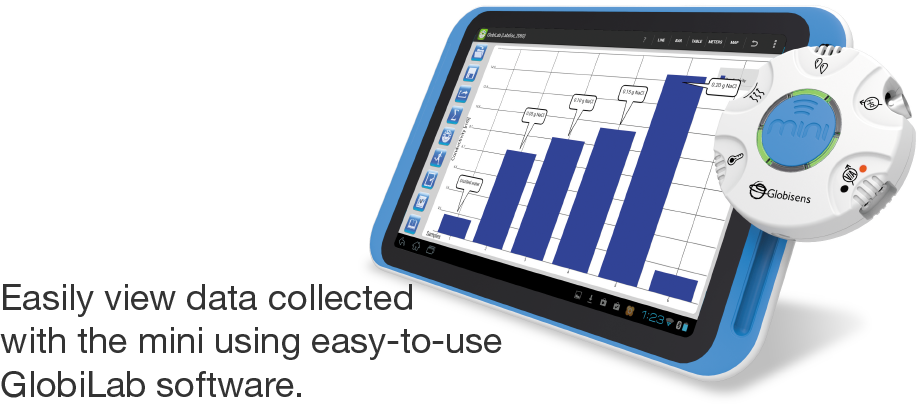
In my humble opinion, physical activity has decreased somewhat in the past 18 months or so. With many students still in remote or hybrid learning environments, they're less likely to be as active as they were when attending school on-site. As most of us know, besides allowing for more physical activity during breaks (run outside for 15 minutes, 5-minute stretches every hour, 60-minute lunch and recreation break sans devices), learning should also incorporate movement. In addition, with the push for increased hands-on STEM integration, students who are learning from home need a viable option for STEM education besides online games and interactive worksheets.
There is a terrific STEM lesson that combines inquiry-based learning and physical activity using a handy, portable science lab called Labdisc. The Labdisc is a wireless, battery-operated compact data logger with 15 built-in calibrated sensors. It is the perfect exploration tool for conducting experiments anywhere, including outside of the classroom. The Labdisc comes with a library of lessons for all grade levels, many aligned to NGSS, including one called ‘Right on Target’ where heart rate is recorded before and after exercise to determine target heart rate. What I especially liked about the lesson is the thorough explanation of exercise intensity and how it relates to target heart rate. Not only will teachers have a standards-aligned lesson complete with background information and purpose, but it can also be facilitated live as a synchronous lesson or as an assigned, asynchronous activity.
If facilitated as a live lesson, the teacher can proceed through the key points and vocabulary with students. The simplest way to do this is through a KWL (Know-Want to Know-Want to Learn diagram) to gauge what students already know about the topic and think about their own learning goals. Whether in-class or via video conferencing, have students work in breakout rooms to complete the diagram then share as a larger group. If an interactive display is used, take advantage of screen mirroring features so students can cast annotations from their web-enabled device to the display. If the lesson is assigned, provide students with a KWL doc and have them complete and post to the class LMS. Assign groups so students can post feedback on one another’s diagrams.
For the Experiment Procedure, the teacher may need to model how to use the ear/finger clip to measure heart rate and possibly one or two of the activities listed in the lesson doc. Then the Labdisc can be assigned to students to go through the physical activities. The experiment should be repeated a few times throughout an extended period to better measure activity level progress. What is especially helpful about Labdisc is that all data recorded can be transferred from the mini (unit) to the GlobiLab software to create graphs. Each student’s data is easily collected and can be analyzed right away.

Of course, there is always room for creativity with these experiments! Have students add an activity such as jumping rope, lifting light weights, or a common household activity such as vacuuming or mopping the floor (I can imagine this will be a favorite at home!). Students can also video record themselves performing the activity using the Labdisc and post to the class LMS, share at the next synchronous lesson, or email to the teacher as evidence of activity completion. Have students complete a survey using an application like Google Forms by modifying some of the questions in the Questions & Observations section of the lesson (for example, change #2 – “Which activity produced the greatest heart rate?” into a multiple-choice question) then share survey results with the class. A once “less-than-exciting” lesson or activity, can be modified and enhanced in any number of ways and Labdisc is certainly a dynamic tool to do this.
Let’s get moving! The winter doesn’t have to hinder increased activity or STEM integration. Nor does a remote or hybrid learning environment have to prevent anyone from doing hands-on, inquiry-based activities. If students are learning from home, set up a check-out system for the Labdisc. Plan on integrating more activity using Labdisc lessons!
We’d love to hear how you have used Labdisc in your classroom. Please comment below.
For more information on the Labdisc portable STEM lab, go to mimio.boxlight.com/labdisc-. You can also read how Labdisc has been used in different educational settings by visiting mimio.boxlight.com/case-studies-white-papers.


